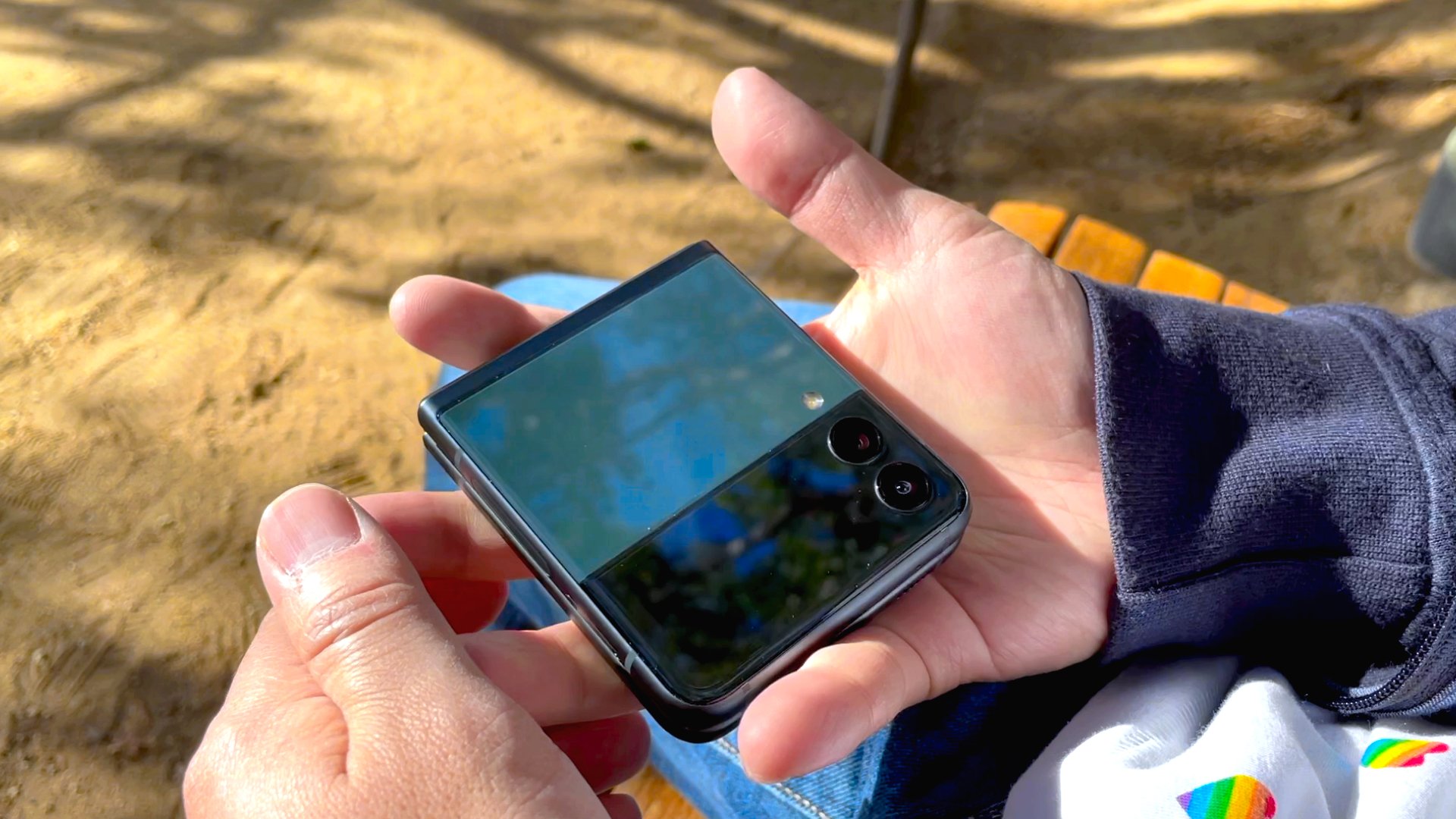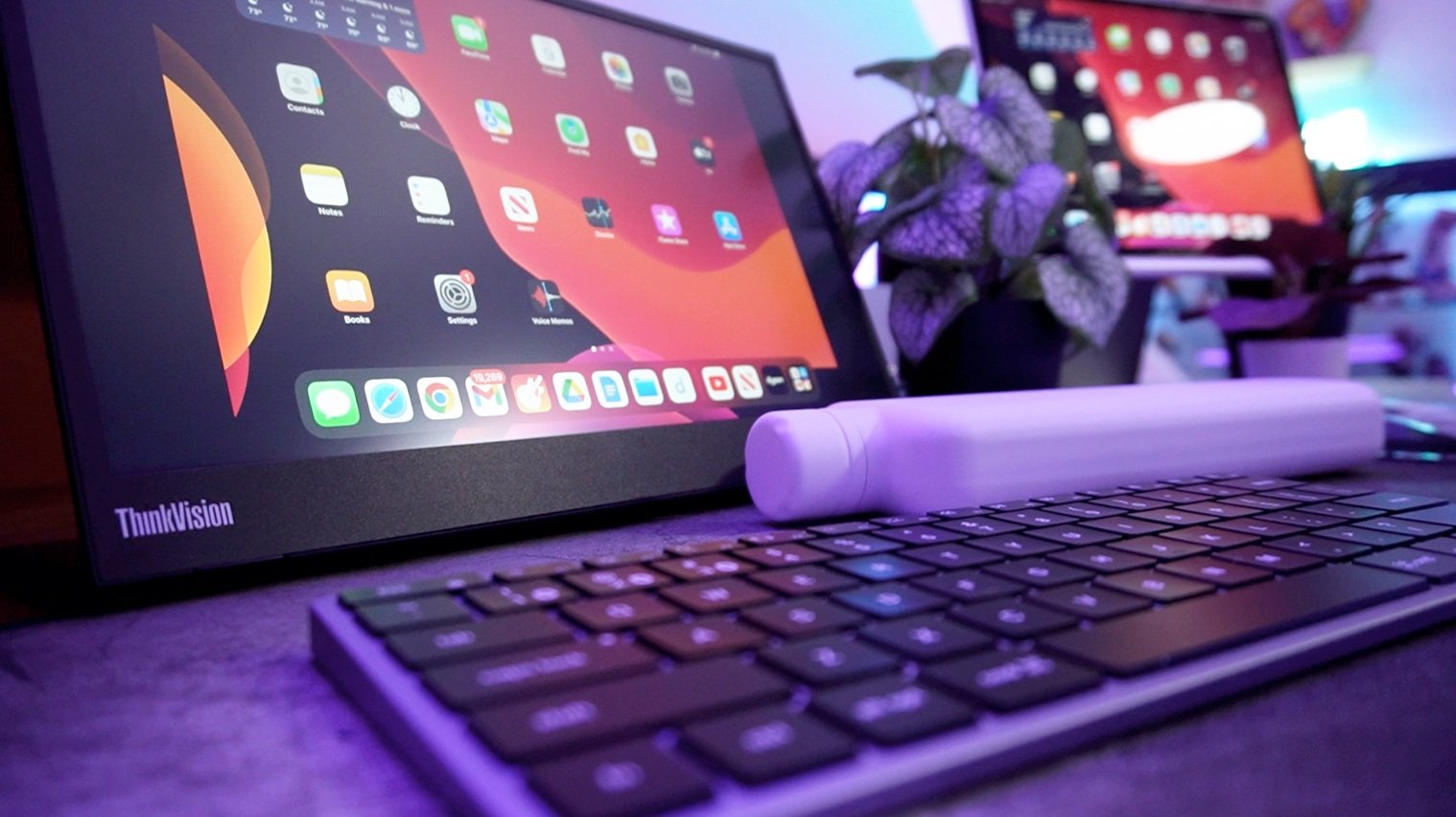Samsung Galaxy Z Flip 3 Review: Thrice As Nice
Purchase Price: $999.00
We are a participant in the Amazon Services LLC Associates Program, an affiliate advertising program designed to provide a means for us to earn fees and support our channel by linking to Amazon.com and affiliated sites.
This might not be the phone that we will look back on in 10 years and say that it was a step forward in the evolution of smartphone design, but I would say that the Samsung Galaxy Z Flip 3 is a very important release for Samsung. To say the third time's a charm would be a good way to look at the Z Flip 3. This flipping form factor is no longer such a crazy radical idea thus contributing to a cheaper starting MSRP. At exactly $999, this folding phone is actually cheaper than the non-folding Apple iPhone 13 Pro Max. With that new starting price, buyers can now choose between either a wacky design or pure performance at the same price tag. I’m willing to bet many consumers will look in the direction of a wacky phone.
Third Time's the charm





There’s no denying it, the Z Flip 3 has matured dramatically this year. It may not look that much different form factor-wise, but this does feel on another level when compared to the first generation Z Flip. While that phone was interesting to use, part of me did feel nervous about the sustainability of the device with constant usage. I don’t feel that way at all about the Z Flip 3. The rougher cut and finish of the frame inspires a bit more confidence when holding this expensive phone naked. The original Z Flip was a bit too smooth on my fingers for me to hold it confidently. While the Z Flip 3 is also made of glass everywhere you touch, the frame no longer has that rounded feeling. That’s not to say that I don’t still use a case with the new Z Flip. I absolutely do and recommend that you do as well. I’m just more impressed with the things Samsung has done to make this a better overall experience. Even the official OEM cases this year have implemented added functionality to benefit the Z Flip form factor. It’s a very thoughtful year of advancements from the Korean giant.
Product Specs +
- 6.7 inch 1080x2640p Super AMOLED display (426 ppi)
- 120 Hz Refresh Rate
- Wireless Charging
- Side Mounted Fingerprint Scanner
- Qualcomm Snapdragon 888 5G processor
- 8 GB ram/ 128 GB storage
- 3,300 mAh battery
- Android 11 One UI 3.1.1
Camera Specs +
Rear Cameras
- 12 MP, f/1.8, (wide)
- 12 MP, f/2.2, (ultrawide)
- 4k @60fps Video Recording
Selfie Cameras
- 10 MP, f/2.4 front camera
Second Take on Secondary Display
This advancement carries over with the front secondary Super AMOLED display that functions as a notification hub so that the phone won’t need to be flipped open all the time. This new larger 1.9 inch touch screen has corrected a previously weak design point from the previous iteration of this phone. The 2021 model actually has a responsive and usable secondary display, unlike the tiny sliver on the first generation model. I’ve been utilizing this to set timers, glance at my notifications to determine whether they need to be addressed, and most importantly: to check the time. Samsung has also implemented animated wallpaper customization here so that each phone has a distinct personality behind it based on their user’s taste. I love what Samsung has done on the outside of the clamshell this year and applaud them for this redesign. I don’t necessarily need the front display to run full apps like how the Motorola Razr 5G is capable of doing, but I do believe Samsung has found a good medium between useful functionality and minimalistic design when it comes to this part of the form factor.
Surprisingly Good and Surprisingly Bad
Another thing the Z Flip 3 has improved on and can run laps around the Razr 5G now are the camera results. Even with just dual 12 MP cameras, the Z Flip 3 has impressed me as an overall solid shooter. When it comes to landscape shots in well source lit environments, you can absolutely have moments where you’re impressed by the delivery of photos from this AI. The digital bokeh has seriously come a long way since companies first started trying to emulate a DSLR. This phone is able to pick and distinguish pieces of the background interweaved with pieces of the foreground to determine what part should be in focus and what part shouldn’t. I’ve reviewed phones that cost even more than this one and are still plagued with horrible digital bokeh edging in much less stressed situations. Take a look at this leaf vine wall I took a picture of at Getty. Of course it still isn’t perfect as it does miss some areas, but I’m plenty impressed with what it already does right.
Pictures in good lighting are well detailed and exhibit that saturated Samsung way of processing colors we’ve all grown accustomed to when using their devices. The phone picks up what to expose properly in the right scenarios and I’m generally left with good photos on the first attempt. Low light however, is a bit of a mess. The cameras push the ISO rather high as the Z Flip 3 doesn’t really have good automatic aperture control from what I can tell. There are many phones out there right now that perform significantly better in low light scenarios. That basically makes this phone a wash. I think half of the performance is surprisingly great, yet the other half is surprisingly bad. If you don’t shoot as many pictures at say a hipster restaurant or coffee shop and do most of your camera snapping on hikes, then the Z Flip 3 can deliver really well for you.
PErformance vs. Endurance
Samsung has also delivered with performance this year. Unlike the first generation phone with an already outdated processor at launch, the highest end Qualcomm chip at release date was incorporated into the phone. The Snapdragon 888, 8 GB of ram and 128 GB of storage is plenty enough to keep the Z Flip 3 pushing through the most intensive workflows that modern apps can summon. I haven’t had any issues with performance other than the fact that the phone can’t stay on long because big apps consume way too much of the battery. Highly intensive mobile games play well on the Z Flip 3, except for the fact that you really can’t play them as the battery drains ridiculously quickly. I had fun with Marvel Revolution for a bit until I saw red warnings. I had fun with Last Day on Earth for a bit until I saw 5% left. Even with just daily workflow usage without gaming, the 3,300 mAh battery can’t keep up with me. I can squeeze out about 12 hours off a plug and get roughly 3 hours of screen on time. Keep in mind, this is all with modified usage without streaming videos or playing games.
This is unfortunately a really weak phone in the battery life department. Luckily if you have a Qi charger, you can plop the Z Flip 3 onto one throughout the day to keep the life bar flowing. I talked about the awkwardness of Qi charging with many chargers due to the folded form factor not hitting the right spot in my full review of the original Z Flip. That still applies here.
A creasing viewpoint
It’s fair to say that the folding 6.7 inch Super AMOLED display sacrifices longevity for function. Whether that function is worth the battery life is debatable, but there is no debating that the 1080 x 2640p display is a marvel to look at. Yes the crease is still there, but I am amazed at just how much better feeling the screen is this year compared to last. I feel like I’m actually operating a regular glass phone screen found on normal phones. I was keenly aware that something felt different on my fingertips during my time with the first generation Z Flip. That was even more evident with the Moto Razr 5G. The Z Flip 3 just feels like quality on another level. This is what I like to see when it comes to technological improvements. Samsung says the screen this year is more durable and now IPX8 certified for water resistance. That’s a pretty impressive feat for a phone designed with a gap in the display at the crease just a couple generations ago.
Everything else about the viewing experience is distinctly Samsung. There’s no way you can miss Samsung’s signature AMOLED flare and the Z Flip 3 even with its folding screen, honors that quality. We even have up to a 120 Hz refresh rate for ultra smooth navigation through Android 11 running One UI. I really don’t have any negative things to say about the display. I know some people dislike certain aspects that come as a result of a folding screen, but none of those things have bothered me on any folding device I’ve used to this date.
can it be mainstream?
I found myself rather enjoying my usage of the Z Flip 3. For the first time ever, I didn’t feel like I was using anything special. I didn’t feel like I was using anything distinctive. I didn’t feel like I had a weird phone in my pocket. While it’s still too bulky sitting in my pant pocket, this just felt like a normal smartphone to me during my month using this as my daily driver. That’s a huge win for Samsung as this is no longer a gimmick. This is normalized to me now. I didn’t feel this way about the Z Flip or the Razr 5G after using them for the same amount of time. I couldn’t wait to go back to a regular candy bar phone. Something changed this time around and I can absolutely pinpoint what it was. Samsung really did analyze what was working and what was not and improved all of it regardless. If an OEM wants to push a new form factor, this is the way to do it. I give Samsung a lot of credit for the product they rolled out this year and I’m truly looking forward to seeing where they continue to take it.




























Alex
Caught in between the conundrum of his fascination with retro and the future, Alex has a very unique taste in technology. Never one to follow trends like his millennial peers yet constantly desiring to get ahead of the curve, he sees technology like he does his other love: comic books. Always looking for the best value or a hidden gem, his collector mindset reflects on some of his favorite gadgets: the Moto X (2015), HTC U11 and the Google Pixelbook. If there’s a good tech deal out there, Alex is on the hunt!